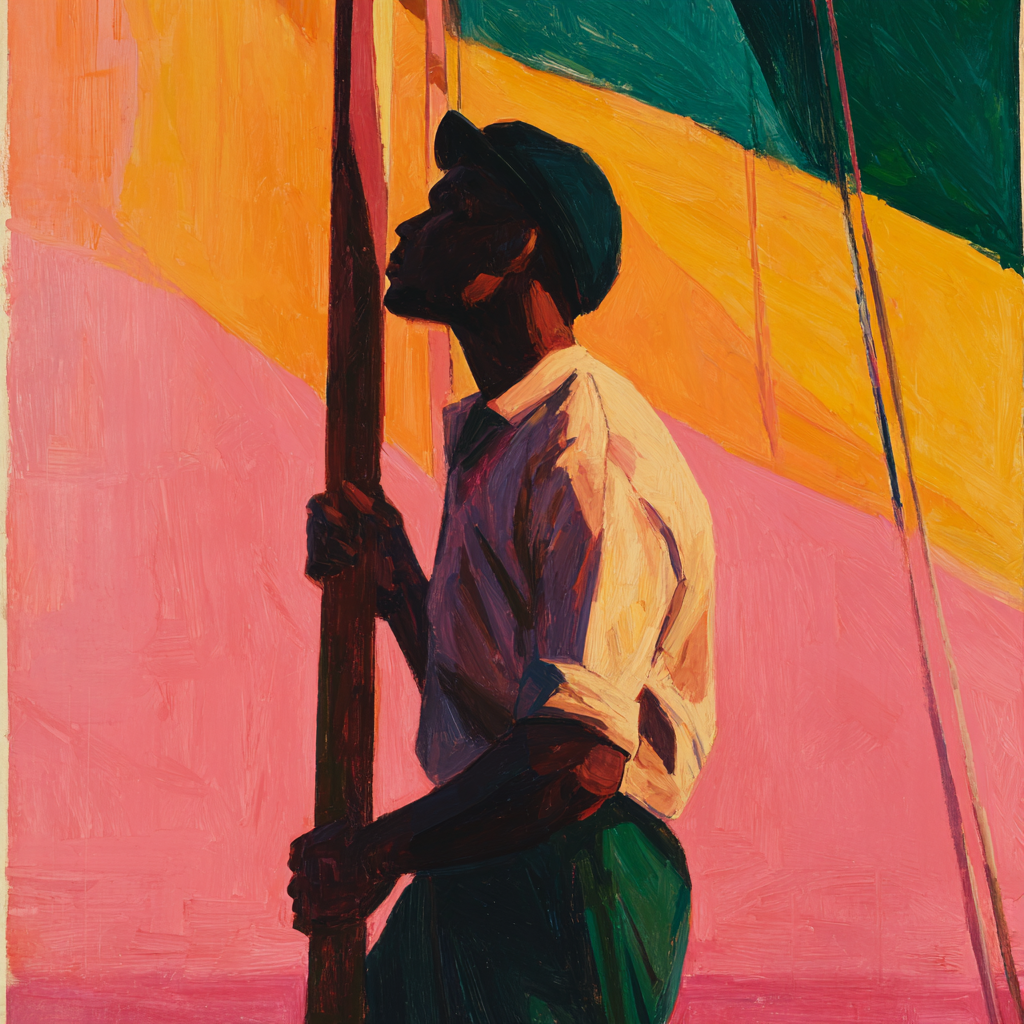


THE LEAFLET
July 24 2025
global v local seasons, global v local challenges, choose edits by percentage gain
GLOBAL + LOCAL SEASONS
In Hell Yeah or No, Derek Sivers suggests deciding whether you want your next project to have global or local focus. He shares an example of a time he shifted from playing local shows in a local band to starting a business distributing CDs for musician friends around the country. He moved from local to global work and made choices about where he put time and attention accordingly.
In Sivers’ framework, “local” and “global” are rough categories. “Local” captures something like “your city” or “your nearby area” and “global” could be defined as “anything beyond that” or “multiple places”. So “global” work is not necessarily international or worldwide in scope.
I like this prompt. I also like adding a heavy caveat to it - don’t stress yourself out by seeing global and local as mutually exclusive domains, inescapable once you have chosen one. It can be tempting to think, especially early in your career, that you’re making a grand headwaters decision with the global vs local choice. So many careers, and maybe especially the most interesting and useful ones, oscillate between these two.
You can often find that the experience and mental models you developed in one domain lend you credibility and leverage in the other. It’s great when an education policymaker served as a classroom teacher once upon a time; similarly, it’s super useful when a civics teacher was a Congressional aide. Ditto for CEOs who have done the front-line work.
-eric
Read the rest here.
DESIGN GLOBAL + LOCAL CHALLENGES FOR YOUNG TALENT
Maybe one of the best things you can do for young talent is design global and local challenges for them.
Mike Wishnie founded the Workers’ Immigrants Rights Clinic and Veterans Legal Services Clinic at Yale Law School. I got to serve as a student attorney in the Vets clinic for a couple of years. At the time, Mike structured the docket so that each student in the clinic had two cases: one direct client service case and one impact litigation case. In the direct service case, you were typically filing a VA benefits claim on behalf of one veteran. In the impact litigation case, you were usually trying to shift the nationwide policy of a federal agency (like, you know, the Department of Defense) on behalf of thousands or even millions of veterans.
Mike applied the same scrupulously high standards to your work on both types of cases. The ambitious ones among us weren’t allowed to give the local work short shrift in favor of the shinier global work. The bleeding hearts among us couldn’t shirk the global stuff for the nearer term, tractable rewards of the local work.
Legal practice can lend itself especially well to an explosion (or enrichment) of the global-local binary because of standing requirements. A lawyer can’t bring a suit just because they think a law is dumb or a roughly defined group of people out there are getting a raw deal. The lawyer has to have a client. That client is often an individual person. Hard to get more local than n=1. That client’s case, and the arguments made on their behalf, can implicate more and more global dimensions of the law. Through appeals, the most local complaint can ultimately come before the US Supreme Court, where law gets its most global interpretation and application.
Mike made all this present and urgent for us. In addition to feeling very tired, in his clinics you could feel a little drunk on opportunity. It was hard to be cynical or complacent. Everywhere you look there is a veteran who you have the skills to help get healthcare or spousal benefits or a just, honorable discharge. Everywhere you look, there’s a fissure in the great parching dam of the federal government that can be widened to let justice flow through.
As sophisticated as the legal reasoning and litigation strategy got at times, Mike’s biggest lessons seemed to be simple, in the end:
Get to work.
Treat your clients with the deepest respect.
If you are unclear how to do 2, see 1.
-eric
Read the rest here.
CHOOSE YOUR NEXT EDIT BY IMPROVEMENT PERCENTAGE
When you’re working on a product for your customers or a piece of work for your audience, it can be hard to know when to stop. You can fall into a perfectionist trap.
I have found it helpful to ask myself: how much better is this change going to make the thing I’m working on? Am I embarking on a 10% or 1% or .1% improvement?
In your early drafts, it might be wise to ignore any changes below 5-10%. You need feedback on bigger, more fundamental parts of what you’re doing. The color of the drapes doesn’t matter much if you’re building the wrong floor plan.
In later drafts, when you’re closer to publication, you can zoom in on those 0.01-1% improvements. One way I can try to get to this estimate, back of the envelope, is thinking about what percentage of the audience will be actively delighted by the change I’m making (or actively dismayed by its absence). That’s the percentage improvement it represents.
-eric
Read the rest here.
COMPELLING QUOTES
Sports journalist Dotun Akintoye on conflicted basketball star Joel Embiid:
His weaknesses and his misfortune are no truer than his courage, his strength, his sacrifices, his astonishing ascent. He has made and is made of all of it.
Writer and CEO and poker champion Cate Hall on talk vs text:
After a dozen inquisitive conversations with people in a given field, you will already have the beginnings of a good network, as well as lots of knowledge you could never accrue in a formal learning setting. Talk to a dozen engineers working in AI labs and you’ll know more about what’s happening at the frontier of AI development than you could garner from a million thinkpieces or tweets. Remember that at any time, the latest information in a field won’t be written down.
Novelist Richard Ford on love and creation:
There are a hundred thousand species of love, separately invented, each more ingenious than the last, and every one of them keeps making things.
Keep going, keep growing,
Ben & Eric